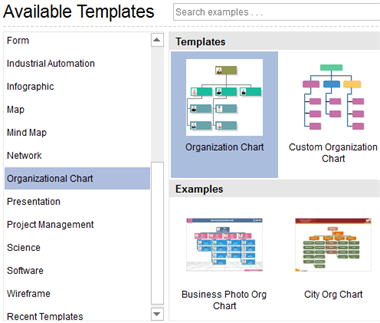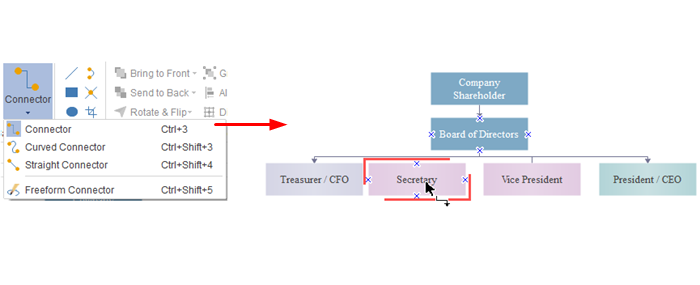Administrative Structure of A Company
A company should have its own administrative structure in order to operate effectively. It can help assign roles to departments and individuals. This page will demonstrate how a company administrative structure works.
How to Create Administrative Structure of A Company
With a large amount of symbols, templates and easy-to-operate feature, this professional chart maker can help create an effective administrative structure. Follow the steps below and see how to create an administrative structure for a company.
-
Follow the instruction and open a new org chart drawing page: Available Templates - Organizational Chart - Organization Chart. Double click to start designing your own chart,

-
Add Position Shapes and Connect Them Together: drag and drop the position shapes according to your company administrative structure.

- Complete the administrative structure of company according to the positions and roles of the organization. Use different colors to highlight each department branch.
- Save and Export: once completed the design of your company administrative structure, save the file or export it as other formats if necessary.
Example for Administrative Structure of A Company
The example below shows the basic content of a company administrative structure.

Explain in Text:
This is a formal administrative structure of a company's management created by Edraw. It shows the most typical structure of a company. Its hierarchical system in a company is classified into the following 4 types:
1. Company Shareholders
Shareholders own the company. A shareholder doesn't run the business or participate in the management. They elect who will run the business on behalf of them, directors, and vote on major decisions like acquisition, merge and the sale of assets.
2. Board of Directors
The Board of Directors has a very close involvement with the management of the company. They are elected by shareholders and report to them annually. The primary responsibilities of directors are to protect the interest of shareholders.
3. Officers:
Officers are elected by the Board of Directors. A company has 4 typical officers: President, Vice President, Treasurer and Secretary. They are responsible for the daily management of the company.
- President: have majority of the responsibilities and in charge of company policies, signs important contracts and documents, reports to the Board of Directors,
- Vice President: Senior executive of the business, successor of the president in the event of death or dismissal,
- Treasurer: responsible for financial reports and transactions,
- Secretary: maintains corporate records and documents.
4. Employees: carry out various tasks related to company affairs, report to officers of the company.
Every company needs an administrative structure to insure a systematical operation. If you want to learn more about the usage of org chart in administration, hit the links below:
More Resources:
Chinese Administrative Structure

